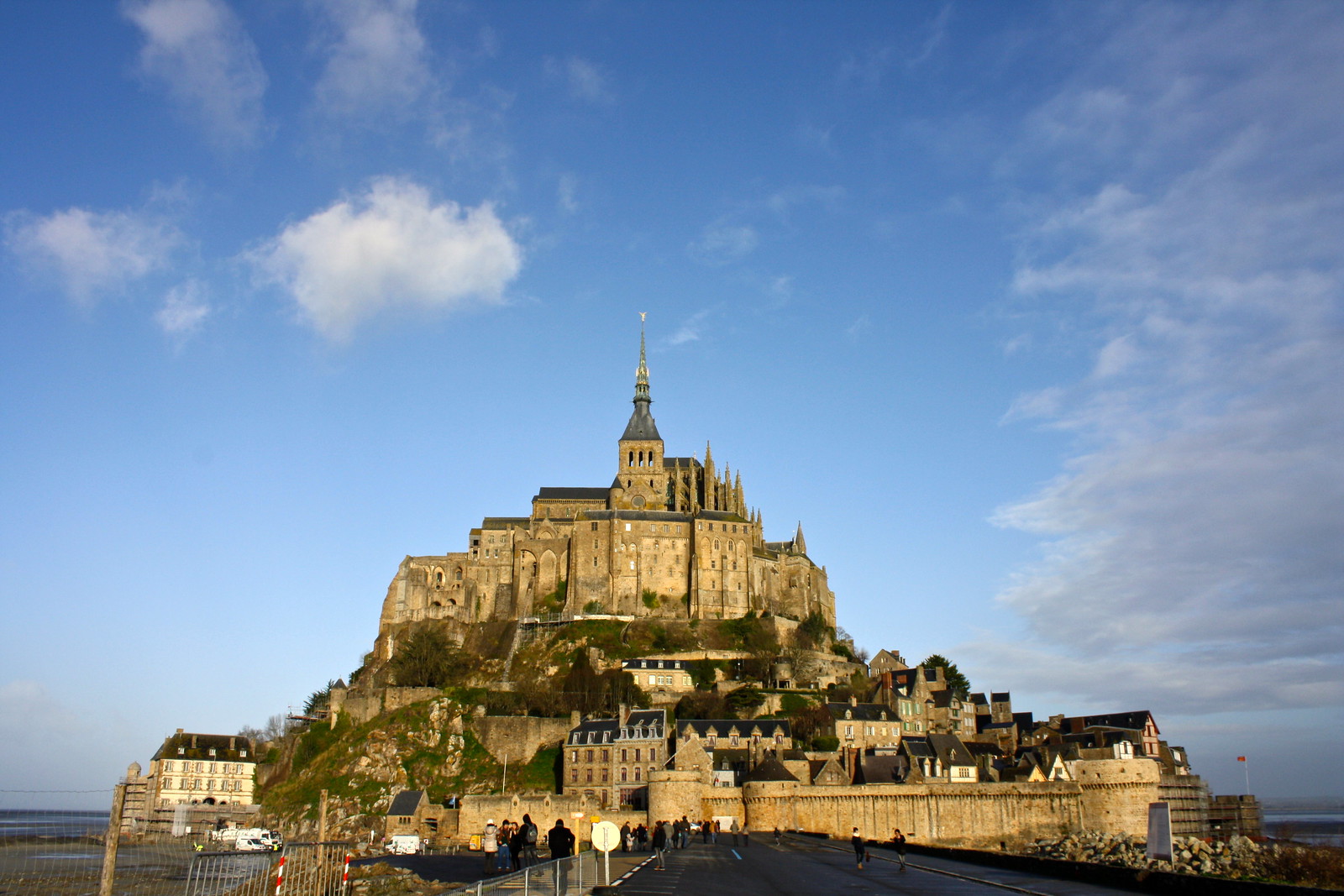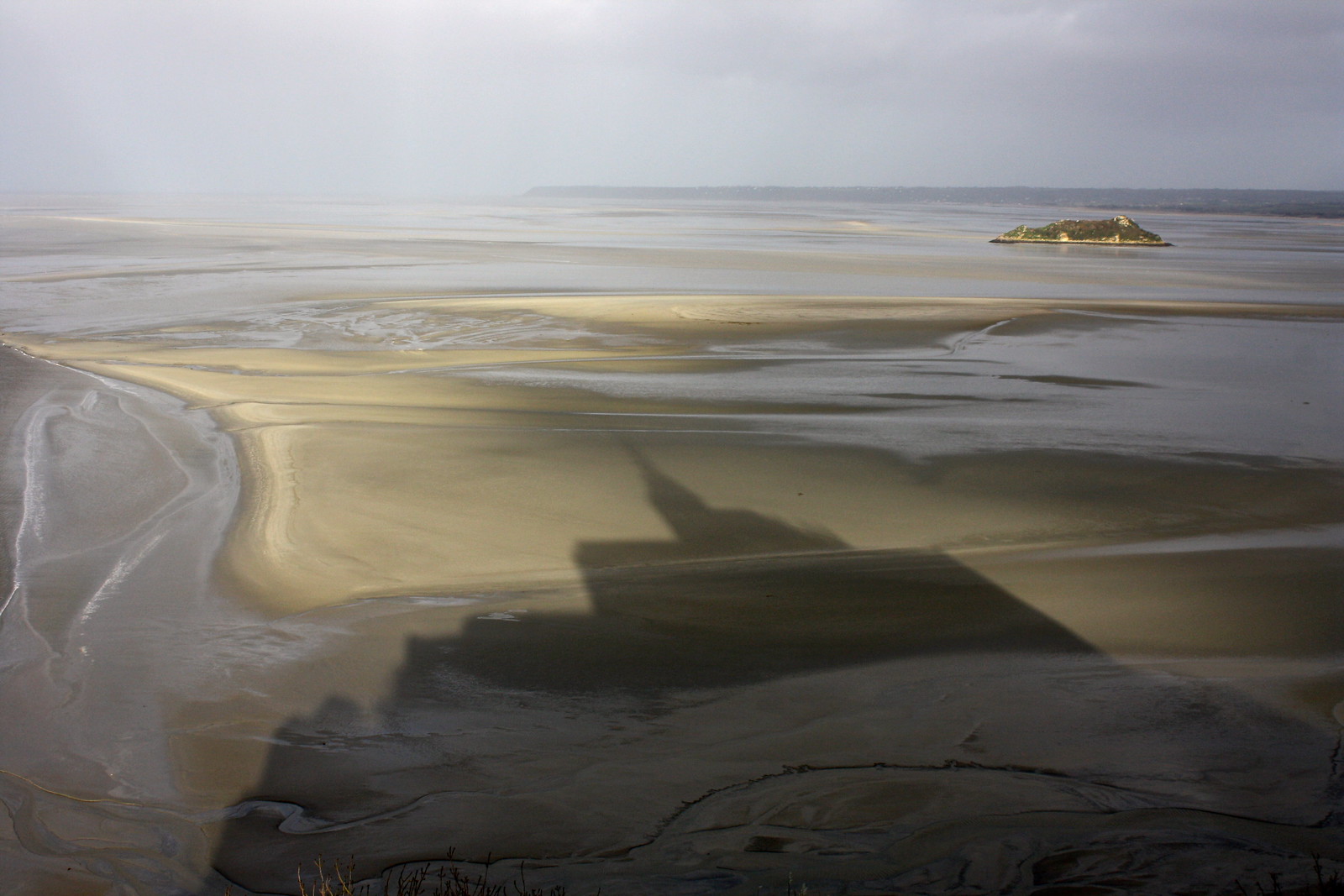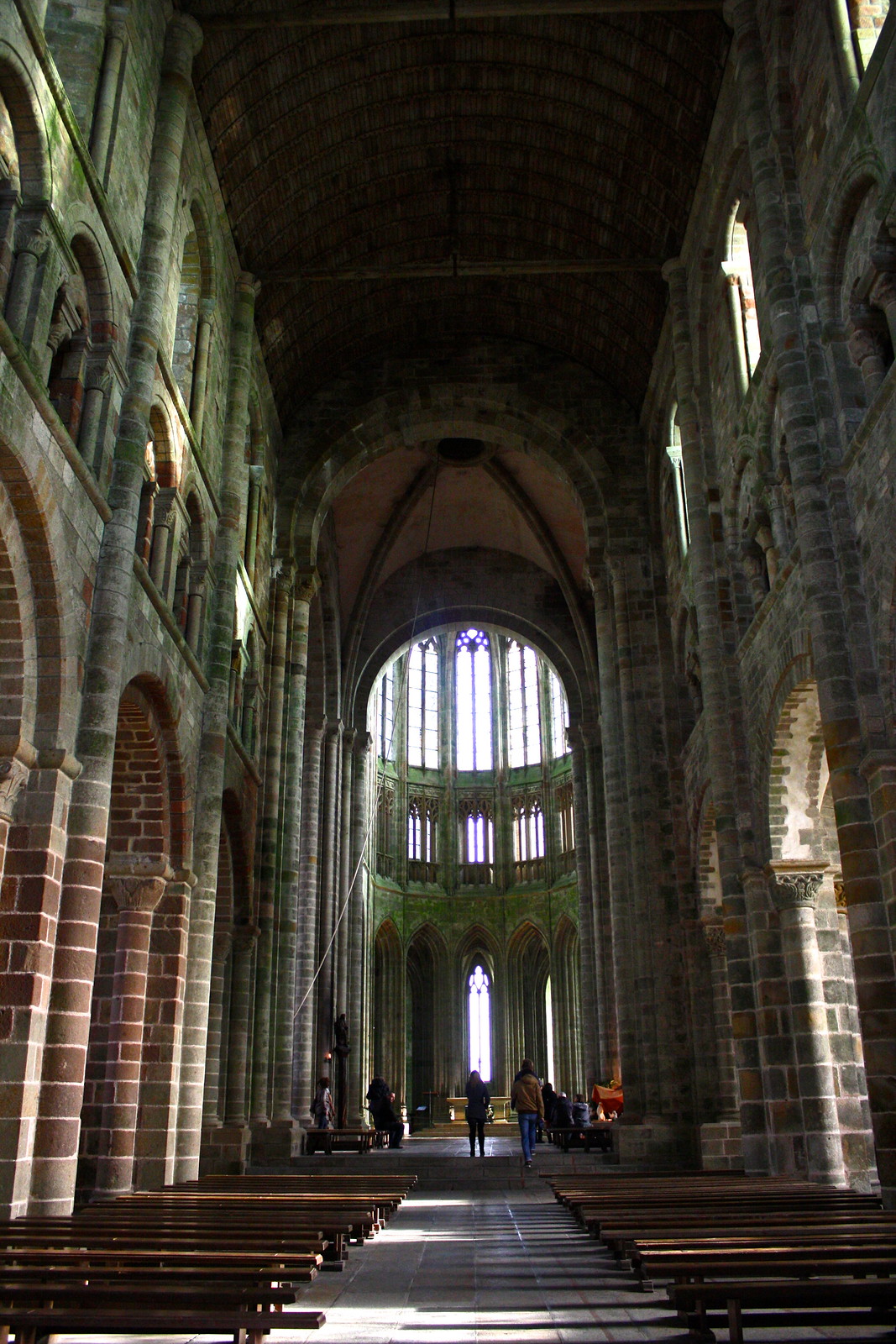After
Paris and the
Bayeux Tapestry, the third thing I wanted to see while traveling in France was
Mont-Saint-Michel, a towering monastery built on top of a mountainous island off the coast of Normandy. Before visiting, I really didn’t know much at all about the Mount except that it was only accessible when the tides were out…and that it looked just plain cool. During the visit, I ended up learning a bit about French history and why the Mount is such a big deal for the French people.
It was by sheer luck, though, that I was able to visit Mont-Saint-Michel at all (pronounced “mohn san mee-shehl” [mɔ̃ sɛ̃ mi.ʃɛl]). The very day I had chosen to visit Mont-Saint-Michel was
the first day in weeks that the tourist bus was running between Saint-Malo (where my hostel was) and the Mount, with maybe one or two other runs more for December. I paid 20€ for the round-trip service but didn’t complain because this really freaky coincidence made the whole visit possible. One hour later, the bus driver dropped the dozen or so of us riders off at a brand-new parking lot south of the Mount on the mainland. Although it was really cold and intensely windy, the sun was at least shining and—yes—
a rainbow had appeared with one arm ending right next to the Mount. I took the free tram across the bridge instead of enduring half an hour of cold ocean wind on foot.
To begin the hike up to the abbey, I took Rick Steves’ advice and bypassed the “grotesquely touristic” main street for a quiet, scenic hike across the
stone ramparts encircling the island. Ramparts, because in addition to serving as a monastery, Mont-Saint-Michel was a military fortress. During the Hundred Years War—a conflict between France and England over whether the English or the French kings should be rulers of France—the fort was of great strategic importance, although the English were never able to successfully besiege it. These ramparts afforded me some really beautiful views of the bay that leads into the English Channel—which is probably exactly why the French made this island militarily significant.
The
abbey itself was worth the visit, but for me, as a non-Catholic non-Frenchman, it probably wasn’t as interesting as it could have been. Nevertheless, it was really cool to explore all the winding rooms that make up the complex. Not only is the whole thing constructed around the island’s pyramid shape, but the abbey church had to be built on a platform of crypts and halls with hefty pillars to support its weight on the cone-shaped hill.
This place isn’t called Mont-
Saint-Michel for nothing; here’s the legend surrounding the name: The story goes that in the year 708,
the archangel Michael appeared to a guy named Aubert, who was the Bishop of Avranches (a larger town on the eastern side of the bay). For two nights, Michael visited Aubert, asking him to create a chapel devoted to his saintly cult (no, not
that kind of cult, but a type of veneration) on top of what was then called
Monte-Tombe.
For whatever reason, the bishop really didn’t feel like doing this until the third night, when the archangel basically smacked him upside the head to get his attention. Michael then had dew collect on the hill’s summit to demonstrate the church’s dimensions and even suggested Aubert send some monks down to Italy to pick up some of his non-bodily relics to use for consecrating the shrine (angels, after all, have no bodies, and this was one of Aubert’s objections). You can read more about the legend in this historical journal article
here.
I don’t believe Mont-Saint-Michel would attract as many tourists as it does if its only draw was being a cool building on an island; after all, in Cornwall, England, there exists a parallel
St. Michael’s Mount—another monastery also built on a tidal island in the English Channel—yet most people visit London, Stonehenge, or Dover when they go to England, not a church built on an island.
So why is it so popular?
Of course,
the Mount’s beautiful architecture makes this place stand out from other church-topped islands, but its significance to French religion and history are why, I think, it’s so important to the French. As I mentioned earlier, the Mount was a major French fortress during the Hundred Years War between England and France in the Middle Ages. The English laid siege to Mont-Saint-Michel not once but
three times, yet never could take it—even when they had control of the rest of northern France. After the French turned back the English tide into the Channel (see: Joan of Arc),
the Mount became a huge symbol of French nationalism and military triumph (I don’t need your jokes from the peanut gallery about their defeats in the 20th century, alright?).
Additionally, as Rick Steves says in his guidebook, the Mount has drawn pilgrims from across France since it was first built in 708 CE, and its namesake, the archangel Michael, served as patron saint of a number of kings of France as well as of the Catholic Counter-Reformation against Protestantism (Michael slew that dragon in the book of Revelation…surely he could help out with some heretics, right?).
I had lunch on Mont-Saint-Michel, and I probably paid as much for the experience as I did the tasty food. I ordered a
galette, or a thin, savory pancake made from brown buckwheat flour and filled with ham, cheese, and a fried egg. Galettes are really popular to eat in the regions of Normandy and neighboring Brittany. For dessert I got a
crêpe, or thin, sweet pancake filled with butter and sugar. Yeah, those two ingredients are basically all my sweet tooth needs to be happy.
When I visited in December, the authorities were in the process of tearing up the causeway and constructing an elevated bridge from the island to the mainland. They’re trying to restore the original effect that the tides used to have of separating the Mount from the coast whenever they came in each day. They haven’t done so for decades because the causeway leading to the island has (no pun intended) caused silt to collect from the Couesnon River (pronounced “kway-nohn” [kwe.nɔ̃]), which means that the Mount has never been totally surrounded by water as it was historically.
So they’re building a
dam right before the Couesnon empties into the sea, demolishing the causeway, and making new parking lots and a visitor center on the mainland. Hopefully in a few years (when restoration is scheduled to be finished), we’ll be able to experience the Mount as the tides have always treated it.
What has been your experience with sites like Mont-Saint-Michel that are often overrun by tourists? Do you choose to visit them despite the crowds or do you avoid them for “off-the-beaten-track” places? Comment below!









